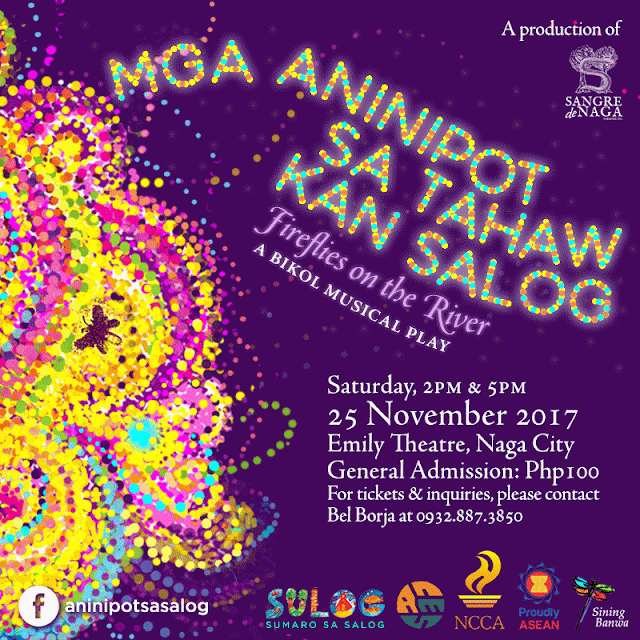Beautiful words

TO emphasize my point, I am writing in a language not natively mine. Because to write in my native Bikol in admiration of the language itself may only make me find myself in the end lacking in expression. For example, I feel awkward saying how magayón is magayón, rather than enunciating ‘beautiful’ or the Latin ‘amoenus’ for the adjective itself. Aside from the utter insufficiency of meaning, and even despite the possible changes when suffixes or compounding words are attached to it, the word magayón itself cannot suffice a passionate Bikolano’s desire to describe the very word which he or she uses to express passion. It can be perhaps what I consider as humility of every language—or of the people speaking it—that makes it unable to optimize the articulation of respect of itself. In many ways, using other language to describe our own vocabulary entries suggests recognition of linguistic differences. It only shows that our language is indeed a language, and thus, it is an entirely established cultural entity and that it is worthy of respect from any other cultures. This is different however from the respect a language gains when one uses or speaks it.
Adrian Remodo has the best way of articulating it: paghubà sa magayón (undressing beautiful)—where magayón is the ‘other’ or better-half of maórag and where both magayón and maórag can stand on their own respective terra firmas. In many of the world’s major languages, the consideration of gender identification is still present in their manners of declension. A gapô or a rock may come out as a female or a male entity based on usage, situation, and other factors. Alas, the use of guápa and guápo in Spanish is even more complex than the way we think it is. Those who are familiar with any of the Romance languages know this.
We do not have this complexity in our own Bikol language. Magayón, which we use to admire the feminine, does not change when we describe Gotâ Beach or Mayon Volcano with it. Much more, our maórag had already gone through innumerable tests, even damnations, it has been bruised by our own history, only to come out more maórag than it should actually be. Ask a contemporary Bikolano what does maórag really means and you will end up hanging out together for the rest of the day. Our language is a strong and beautiful tongue, and I am proud of it, perhaps you are too. I remember a Visayan friend who once candidly told me that our magayón is perhaps the most beautiful word for the word ‘beautiful.’ Now, think of that.
Our kamálig nin tatarámon is as rich as any other vocabulary. But we, native speakers, who love the language and who are passionate about it to the point of trembling, may even declare it as the most beautiful language in the world. This may also be true of course with the Japanese, Yucatans, French, Kenyans, and others, who love and are proud of their own respective tongues. But much as I want to consider them, I cannot but single out the language I first came to know as a human person. And as I write this, I can only imagine the ancient people of Ibalón who had put Bikol language together. Some naughty questions on vocabulary formation razzed my mind: who invented the word makanós (ugly)? or kitô, the Bikol word for sexual intercourse? or angsúd (body odor)? or hurínghuding (rumor)? magayón? maórag? For they seem to be, and I think they indeed are, perfect representations of the entities they respectively represent. I remember Fr. Wilmer Tria’s pag-aláman for ‘impending danger’ when Kristian Cordero, Carlo Arejola and I were actually considering katibaádan. There is erokán and haróng for home or abode; dapóg for stove; ratâ or tikrág for drop or fall; hapíhap for caress; agyát for challenge; súgok for egg; sungó for firewood. The list is endless.
The famous Jesuit philosopher Roque Ferriols perfectly puts it: kahulugán. It could be a better way of expressing than saying the English ‘meaning’ or the more definitive ‘definition.’ For Ferriols, kahulugán is when everything of that something falls—húlog—into its proper place. Our forebears, the inhabitants of Ibalón long before the Occidentals arrived, were geniuses in their own way to have set what kahulugán is for us and thereafter provided for us such a sweet yet solid language.
To discover this, one has to be intimate with the language itself, speak it by heart, and learn to discover with a childlike sense of amazement how beautiful a language can truly be. To discover this, one has to reflect as a child reflects and grins on foliage dancing by the easterly winds. For language is not just a requirement for survival; it something that we live, more like the air we breathe. To become aware of language as an essential component of one’s culture, then to stumble on it as something that is majestically beautiful, is to discover an unlimited way of discovering oneself. And what such great things come after the conquest of the self? It is only when we are able to conquer the world of words when we can move on to transcend to other dimensions, silence, perhaps, the look of the eye, the beating of the heart—the very same thing that happens to a lover after discovering his own perfect way to articulate love.
Photography by Rarinda Prakarsa


Comments